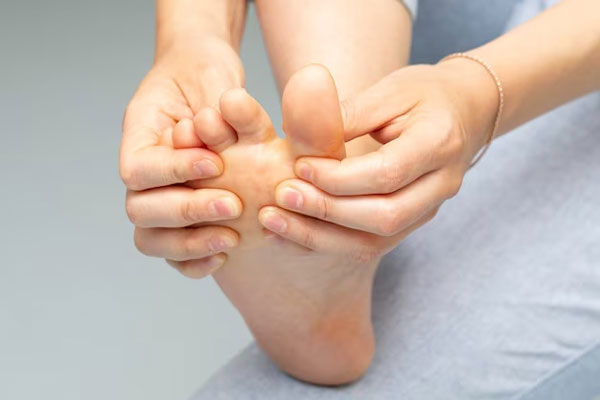Dislocation
Where two or more bones come together, a joint is formed. The bones in a joint are properly aligned to help in the normal movement of the joint. However, an injury to the joint can lead to dislocation and impair its function. Dislocation needs immediate medical help as it can lead to damage to the ligaments, nerves, or blood vessels in the joint involved.
What is dislocation?
Dislocation is a joint injury in which the ends of the bones are moved out of their positions. This temporarily deforms the joint and leads to its immobilization. Shoulders and fingers are the most common places for dislocation to occur. However, it can also occur in the knees, hips, and elbows.

What are the symptoms of dislocation?
The symptoms of a dislocated joint vary with the severity and location and may include:
- Swelling or bruising and discolouration
- Severe pain, especially while moving the joint
- Tingling sensation
- Numbness in the surrounding areas
- Loss of motion (immobilisation)
- Deformation (i.e., bone appears out of place), which is usually visible from outside
What are the causes and risk factors of dislocation?
Dislocation usually occurs when a joint sustains an unbalanced or unexpected blow. This happens commonly after a harsh hit to the area or after a high-impact fall. Once a joint dislocates, the risk of future dislocations is high.
Anyone who experiences severe trauma is likely to have a joint dislocation. However, the factors that can increase the risk of having joint dislocations are:
- Participation in high-impact or contact sports such as basketball, football, hockey, wrestling, and gymnastics, etc.
- Susceptibility to falls, which is common in old people (aged above 65 years) due to poor mobility and in children who play under unsupervised conditions
- Motor vehicle accidents can commonly lead to hip dislocations.
- Presence of certain genes can lead to the formation of looser ligaments, thereby increasing the risk of injury and dislocation of the joints
How is dislocation diagnosed?
It is difficult to determine between a joint dislocation and a fracture.
A physical examination of the affected area of the joint is performed to check for deformity or broken skin. Further, the circulation in the area is checked. If a joint dislocation is suspected, then an x-ray may be done. In some cases, imaging tests such as an MRI may be necessary. The images enable the doctor to determine the exact problem in the involved joint.
What are the treatment options?
Several weeks of rest and rehabilitation may be necessary for restoration of the normal function of the joint. However, there is a risk of repeated dislocation, especially in the case of shoulder joints.
The choice of the treatment is based on the joint involved and the severity of dislocation.
Initial treatment for the dislocation of any joint involves the self-care approach known as the RICE method. As per the method, the patient is asked to rest, apply ice packs and compression, and elevate the joint as directed by the doctor.
The following techniques can be required to assist in treating the dislocation:
- Manipulation: The bones are aligned properly in their positions under anaesthesia to reposition the joint back in its place.
- Immobilization: Once the joint gets back to its place, a splint, sling, or cast may be applied to prevent the movement of the joint and facilitate healing. The joint may be immobilized for several weeks based on the severity of the dislocation.
- Medication: Painkillers or muscle relaxants may help relieve pain that might persist even after repositioning the bones.
- Surgery: Surgery may be necessary only if the nearby ligaments, nerves, or blood vessels are damaged. Surgery is also considered in cases of repeated dislocation of the bigger joints, such as the shoulders. To prevent further dislocation, the joint is surgically reconstructed and repaired.
- Rehabilitation: The rehabilitation plan is separately devised for an individual and begins after manipulation or immobilization is completed. The purpose of rehabilitation is to gradually strengthen the joints and improve the range of motion to its maximum.
Prevention
Joint dislocation can be prevented by practicing safe behaviors such as:
- Use handrails while climbing up or getting down the stairs
- Use non-skid mats in wet areas
- Avoid the use of throw rugs
- Shift cords or other objects from the floor to a safer place to reduce the risk of falls
- Children should play under supervised conditions, while adults should wear proper clothing and avoid standing on unstable items like chairs to prevent falls.